Why You Need Both a Dentist and Orthodontist
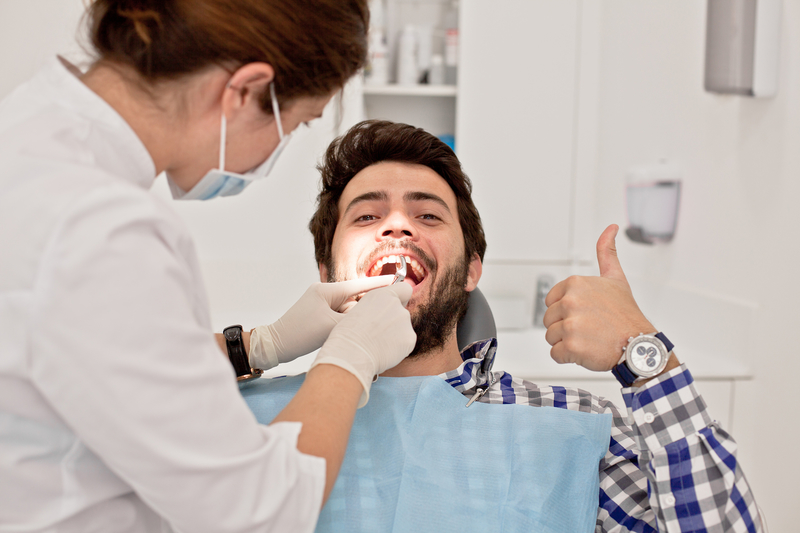
Dentists and orthodontists are both highly-trained professionals that can transform your smile. However, they provide completely different services to patients and both may be needed to help get your smile as healthy as possible. Orthodontic treatment connects to dentistry in many ways, as do the professionals themselves. If you’re like many others, you may need both professionals to keep your oral health in check.
Your Oral Care
Did you know that your oral health can affect all other aspects of your health? This is especially true if you already have some chronic conditions such as diabetes and heart disease. If your oral health isn’t taken care of, your overall health can worse and you are more susceptible to infection. If you don’t control chronic conditions, your oral health can worsen, as the blood vessels that nourish your teeth and gums can become damaged. Your teeth are more likely to decay and get infections that lead to tooth loss.
That is why taking care of your oral health is so important. It can help determine the state of your overall health and if you keep your teeth for a few years or for many. Many people need both an orthodontist and a dentist to help keep their mouth healthy. Not everyone needs an orthodontist alongside their dental care, but millions do. At least 4 million are getting braces each year in the United States alone to correct bite, alignment and problems with the teeth that lead to oral health diseases. When oral health care is happening at home, yet gum disease tooth decay continue to happen, it’s time to also seek help from an orthodontist.
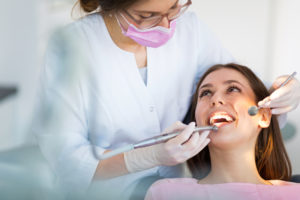
How Can a Dentist Help You?
A dentist is a professional that every person needs. Dentists are vital to you having good oral health for life. They can detect the presence of tooth decay, gum disease, oral cancer, oral sores and any other oral problem, plus they do the work to help correct those issues. These professionals go to school for 10 years just learning about your mouth and facial structures so they can help you stay healthy. Orthodontists receive all that same training, plus 2-3 extra years learning about straightening teeth, bite and alignment issues and structural problems with the mouth.
Because these professionals do different work, you will probably need both. Dentists have the primary duty to find the presence of tooth decay (cavities) using digital and x-ray technology. Then they have many different procedures to remove decay, fill the cavity, and restore your smile. They can do cosmetic work to make your smile look better and they deal primarily with oral health diseases and helping you avoid them so you don’t have early tooth loss. Orthodontists are trained to see cavities and oral health issues, but they will do structural work to help change your smile instead of dealing with the disease aspect of your oral health. Their work focuses on prevention of those issues in the first place.
How Can an Orthodontist Help You?
Did you know that people have had orthodontic care at least since the time of the Ancient Egyptians? More discoveries are finding orthodontic appliances on teeth thousands of years ago. Why? Because people that long ago also understood the benefits of straighter teeth. It took many centuries for orthodontists and orthodontic work to become established.
Studies found that straighter teeth made dental issues less likely to happen. When patients received orthodontic straightening—even through crude methods—they were less likely to have their teeth decay or break and less likely to have gum issues. The same holds true today. Crooked teeth are teeth that are much harder to clean. In a straight, even bite, the top front teeth rest just slightly in front of the bottom front teeth. From the front to the back, the teeth rest evenly on one another, evening out pressure from biting, chewing, eating, talking and more.
When the teeth are crooked, patients will get areas where they simply can’t get a toothbrush or floss to and those areas decay. The teeth may be at odd angles, and with uneven pressure placed on those teeth all the time, they may simply break. If you have crooked teeth, an orthodontist can easily make a plan to straighten them. Using digital x-rays, an orthodontist can examine your bite, alignment and incoming teeth and can make a plan to ensure all your teeth line up for the best oral health you could have.
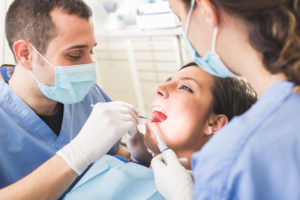
Do You Need an Orthodontist?
Not everyone will need an orthodontist, but their care can benefit most people. Even getting slight straightening of the teeth can reduce your dental breaks, emergencies and issues with oral health diseases. Orthodontic care can even help with bad breath if that stems from plaque and bacteria in the mouth that you can’t quite get rid of. To know for sure if you need an orthodontist, make sure to schedule an examination.
For children, the national recommendation by groups such as the American Association of Orthodontics is to visit an orthodontist around age 7 or 8. This is a key time for an orthodontist to be able to tell if the incoming adult teeth are coming in at the correct angle and place in the mouth. Oral health issues that can become severe later on in life can be caught early and childhood and many oral problems can be prevented with some orthodontic care. For all other issues with finding and filling cavities, gum disease, sores and more, make sure to call your dentist. To schedule your consultation with the orthodontist, call Belmar Orthodontics today at (303) 225-9016!
Be Thankful for Orthodontic Treatment

Studies show that not enough Americans are taking good care of their teeth, especially through dental and orthodontic treatment. The advanced technology available today is what allows patients to keep their natural teeth healthy for life and is something that millions in the world don’t have access to. Find out why oral health services such as orthodontic treatment is so important to patients and something to be thankful for this time of year!
Your Oral Health
When you think of the most chronic conditions and diseases that plague people today, you may not think of cavities as being one of the them. The National Institutes of Health reports that tooth decay—or cavities—are the most “chronic, prevalent disease” among American children and adults. In fact, about 92% of people have tooth decay by the time they reach adulthood. In all age groups, roughly between 20% and 25% of people have untreated decay they are not aware of.
What does tooth decay have to do with orthodontic treatment? This decay can happen to anyone at anytime and you are more likely to have tooth decay during your orthodontic treatment. Many patients opt for lingual, ceramic or traditional metal braces to straighten their teeth. These methods require brackets that are bonded to the teeth with wires that pass through those brackets. Even though these appliances are highly effective for providing beautiful straightening power, they can make it harder to clean your teeth. Because it’s harder to clean them, and some patients don’t take the extra time to do this, you can end up with tooth decay. That adds to that 92% statistic.
The best way to eliminate your risk for that tooth decay (as well as other oral health diseases), is to properly care for your teeth both with and without braces. That involves brushing your teeth at least twice a day for 2 minutes at a time, as recommended by the American Dental Association. When you have braces, you have to do this after every meal to avoid acidic plaque buildup, which happens when your food and drink sugars mix with mouth bacteria. With braces, threadable floss to go around brackets and wires is generally needed, as well as cleaning items such as a waterpik (water shooter) tool and a proxabrush for brackets. Your oral health can be stellar during orthodontic treatment with the right oral hygiene.

How Does the U.S. Compare?
Orthodontic treatment is a time when those in the U.S. can have a greater risk for developing cavities. This comes from a lack of oral hygiene during your orthodontic treatment period. However, the world at large is battling oral health diseases and poor dental and orthodontic care on an epidemic scale. The World Health Organization reports that cavities (tooth decay) and gum disease (periodontal disease) “have historically been considered the most important global oral health burdens”.
60%-90% of people worldwide have tooth decay and oral diseases connected to this condition. Children are affected the most, but statistics are almost as high in adults worldwide. Even though the U.S. is at a high percentage when it comes to tooth decay (92%), the presence of tooth decay is generally eliminated in most of the population through proper dental work and access to dental services. In the majority of other countries—especially underdeveloped ones—dental or orthodontic work is not a possibility for most. Oral health diseases are simply left untreated or the teeth are pulled when they become too painful.
The Connection to Orthodontic Treatment
Getting a cavity or having an oral health problem during your life can definitely be avoided, but most people will have some sort of oral problem, even if it is small. There are ways to prevent those problems such as proper brushing and flossing every single day. A great way to reduce your risk for oral health diseases is through orthodontic treatment. For children, this is known as child orthodontics. The American Association of Orthodontics recommends that children have their first orthodontic appointment between age 7 or 8.
This is a time when baby teeth are starting to fall out and adult, permanent teeth are starting to come into the mouth. Proper examination by an orthodontist can sport bite and alignment issues that are developing in children. When these issues occur, the teeth can come in crooked all over or they may not rest in the position they are supposed to. This can lead to speech impediments, many dental emergencies and broken teeth in the future from uneven dental pressure, higher instances of tooth decay and gum disease, and problems with oral health diseases.
Orthodontic treatment when young can help align the teeth and jaws to prevent oral problems as a child grows. When teens and adults receive orthodontic treatment via braces, they can better straighten permanent teeth when they come in. This sets everything straight and functional before the jaws harden in adulthood. Straight teeth and aligned jaws make it so cleaning the teeth becomes almost effortless. The risk for tooth decay and gum disease is also significantly lower.

Be Thankful for Your Orthodontic Treatment
Dentistry and orthodontic treatment helps diminish the presence of oral diseases.Yes, tooth decay and gum disease happen frequently due to poor oral hygiene habits. However, orthodontic treatment can help prevent those problems in the first place. Great oral care can prevent developing problems throughout your life. Even when these issues do happen, you won’t have to simply get your teeth pulled or let them decay and fall out of your mouth.
You have great orthodontic and dental options in the United States that allow you to keep your teeth, while many people across the globe have to lose them. Remember that the next time you think about skipping your oral care appointments. To reduce your risk for oral health diseases, you can call Belmar Orthodontics at (303) 225-9016 and ask about your orthodontic treatment plan.
How Bite Correction Can Change Your Life?
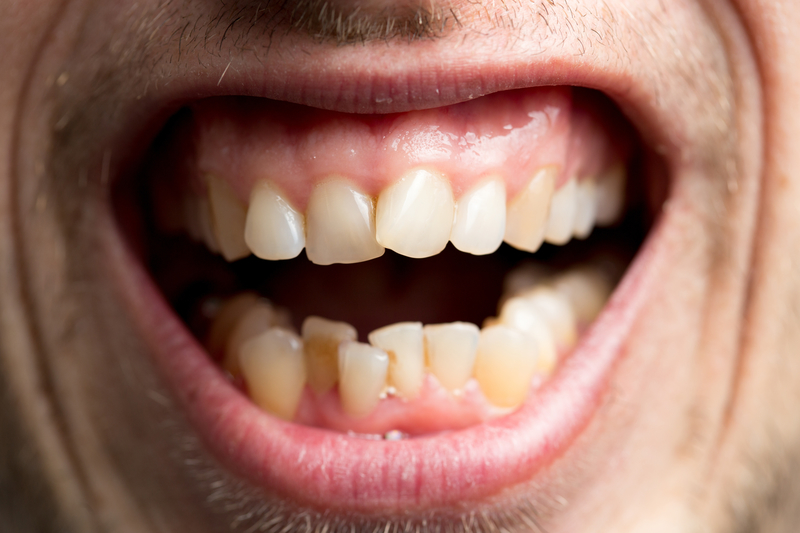
Do you or your child have a problem with their bite or alignment? These problems can seem small at first. However, as a child grows into an adult, bite or alignment issues could cause many health problems. It can even cause speech impediments and difficulty chewing in the future. Find out how bite correction can improve your health and just how important it is to get bite correction via braces if you need it!
Your Bite Should Be a Certain Way
The structure of your mouth is defined by how your teeth and jaws are formed. Your upper jaw and your lower jaw should both follow the same arch in a U shape. Those arches should also line up together. The teeth as well, should lie on top of one another evenly, with your back top molars resting on your back bottom molars all the way towards the front. In a normal bite, the front top teeth will rest on top of your bottom teeth, except they will be just slightly in front of those bottom teeth.
Orthodontic care is not just for teens that are looking to get a straighter smile. In fact, about 1/4th of all people that wear braces are actually children! The American Association of Orthodontics recommends that children have their first orthodontic visit between the ages of 7 and 8. Having an examination early-on helps prevent the progression of orthodontic issues, such as a misaligned bite. How a child’s mouth is forming is a great indication of what their mouth will look like as an adult. If we can already see that their teeth are growing at the wrong angles, or that their jaws don’t line up, we can predict that oral health issues will be present in the future. That is why having this orthodontic appointment at 7 or 8 is so important.
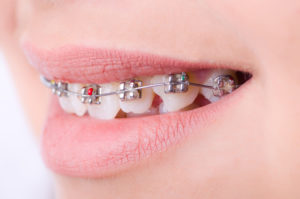
Types of Bites
When a child comes in to have their mouth examined, we can see how the top and bottom jaws line up. In a mouth with correct bite formation, the jaws will line up. If they do and the teeth are not coming in at crooked angles, then a child won’t need orthodontic care unless they want to straighten their teeth later on in life. However, prompt treatment will be needed for alignment and bite correction if a child or older patient has:
- Overbite – The upper front teeth overlap too much over the bottom front teeth.
- Underbite – The upper front teeth rest behind the bottom front teeth.
- Crossbite – Teeth are at varying angles in the mouth, which can lead to decay, broken teeth and speech problems.
Benefits of Bite Correction for Children
The ideal time to receive any treatment for bite correction is during the childhood years. This is when the mouth and jaws are still growing. Because the bones aren’t set yet, it is much easier for an orthodontic appliance to mold a bite into the correct shape without too much effort. This is generally why a child would receive bite correction treatment before they are 10 years old.
If a child receives bite correction via braces, they benefit from their mouth forming correctly. Where there were once speech problems developing, their speech can start to sound normal without lisps or other impediments. Facial features will appear more normal because the structure of the mouth will be maintained with orthodontic appliances. In a child with severe bite problems, some people can physically see parts of the jaws jutting outward. This makes the face look different than it should, and speech will almost certainly be compromised. We stop that incorrect shaping before the jaws harden later on and before dental diseases and problems are developed.
Even if you don’t detect any dental issues with yourself or a child, there are still many advantages for bite correction and braces at an early age such as:
- Observing the progress of incoming teeth
- Monitoring facial and jaw development
- Guiding incoming teeth into their ideal position
- Detecting hidden dental issues
- Reducing the risk of impacted teeth
- Decreasing the risk for permanent tooth extractions (as teeth won’t get uneven pressure that breaks them)
- Reducing the risk of cavities and gum issues that happen when the teeth are crooked and harder to clean
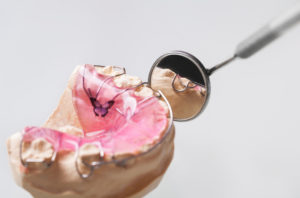
Benefits of Bite Correction for Adults
If you didn’t receive orthodontic care as a child, it is not too late to receive it later on in life. Adults and teens make up the other 3/4ths of patients that get braces. At about age 11 or 12, most of the permanent teeth should be in the mouth. At this time, we can look at a patient’s teeth and see if they need their teeth straightened. When bite problems are present (because child orthodontics was not done), it is harder to do them as teens and adults, but it can be done with normal orthodontic appliances. In some cases, some surgery may be done to reshape areas of the mouth that have hardened into place.
However, the benefits of bite correction and tooth alignment for teens and adults is astounding. Studies show that people perceive you as more successful, healthy and happy if you have straighter teeth than if you have crooked teeth. You’re more likely to get a job over someone that has crooked teeth, because your smile is an expression of your health and how well you care for yourself. That can translate into how well you care for other things, like your obligations.
Studies show that in adults and children alike, that confidence soars and smiles are shared more often when people feel good about their smiles. That confidence boost can change your entire outlook on life, and can lead you to be a more successful person than you otherwise could be. If you have teeth in need of bite correction or straightening, don’t hesitate to see what orthodontic care can do for you! Call Belmar Orthodontics today at (303) 225-9016!

